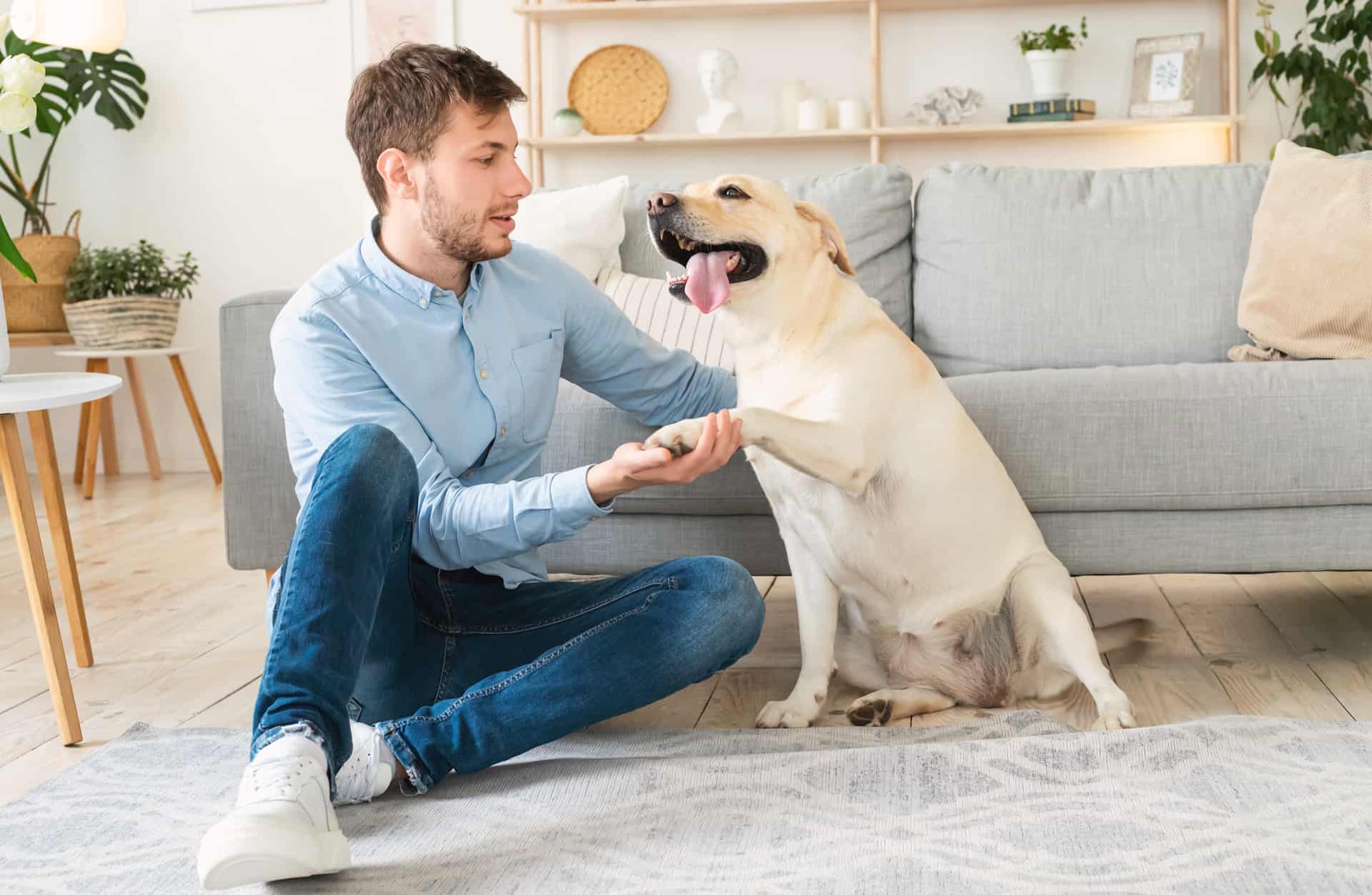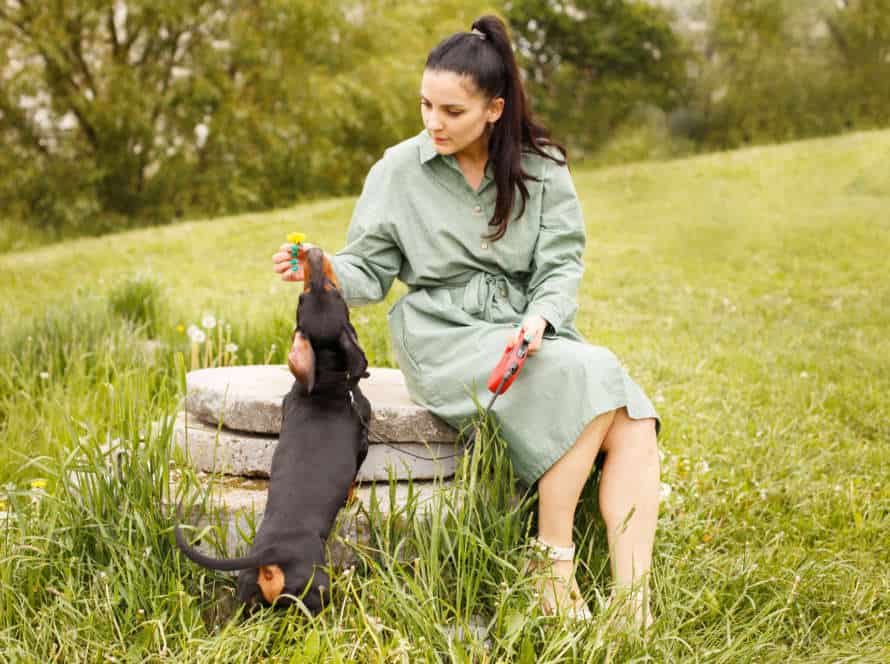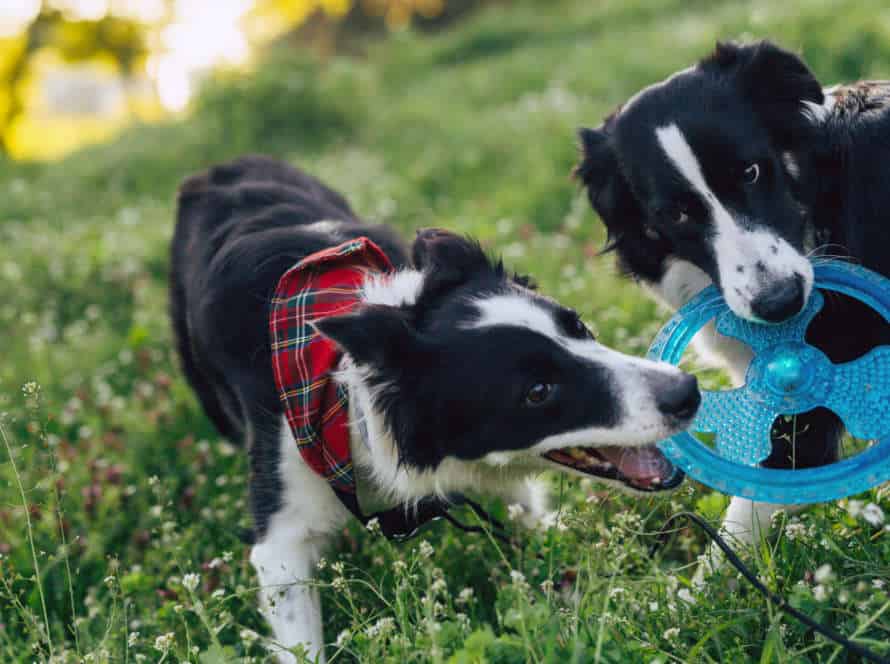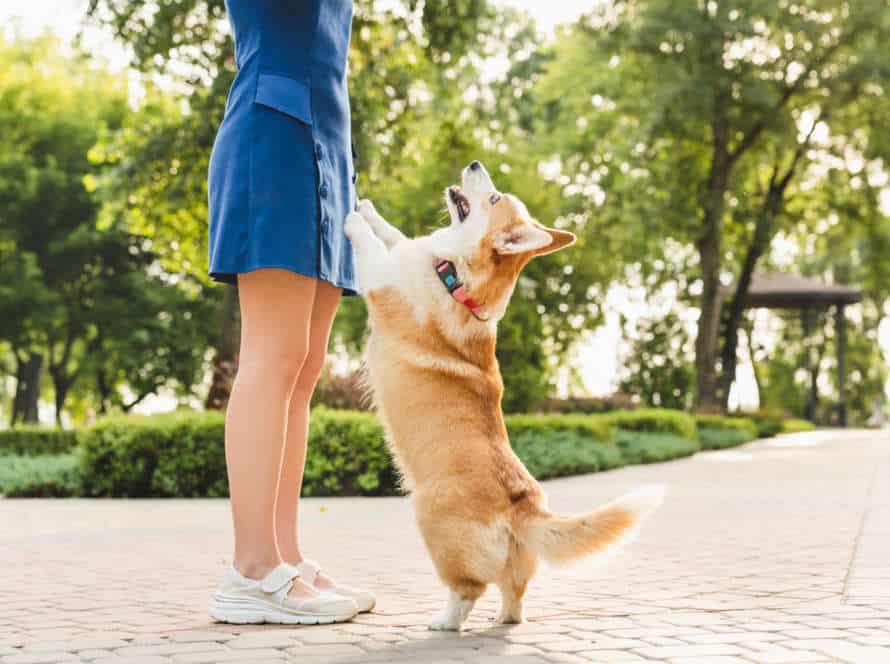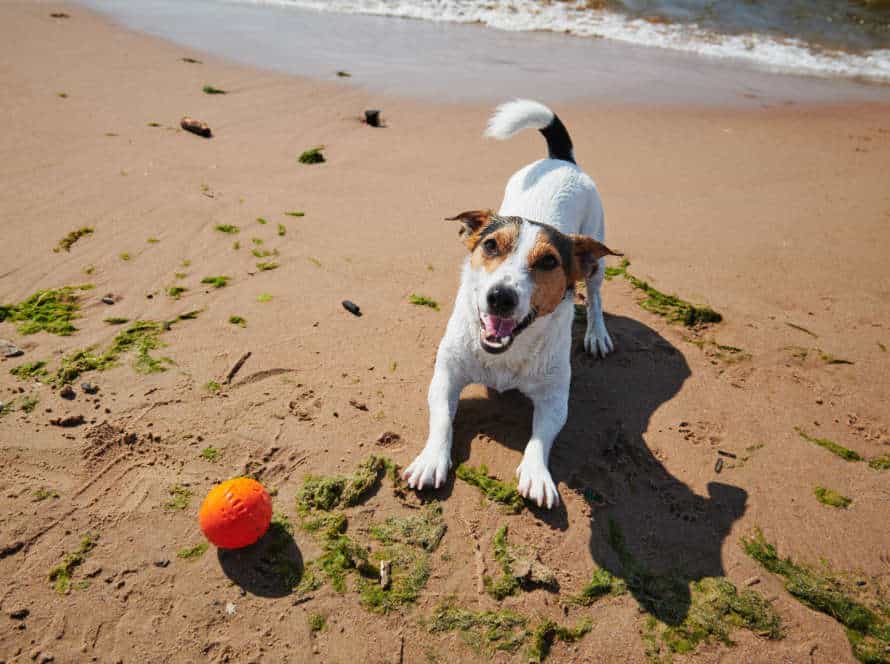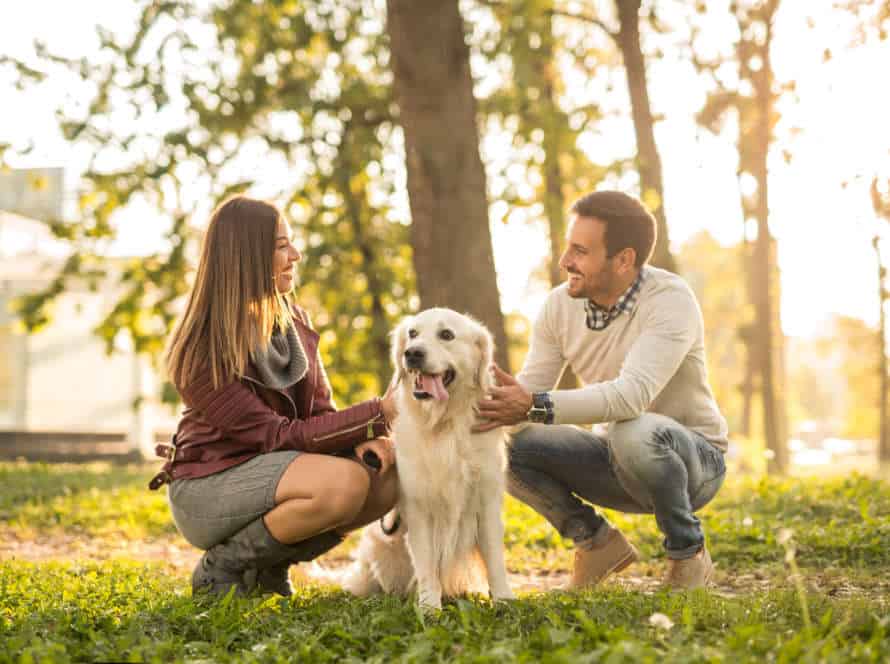Trick Training for Adult Dogs: Combating Boredom and Restlessness
Trick training is a great way to keep adult dogs busy and active. It helps build a strong relationship between pets and their owners. Here are some tricks to get going:
- Shake hands: Guide your pooch to lift its paw and shake hands. Treats and positive reinforcement will make it successful.
- Roll over: Get them to lie down, then use a treat to bring them onto their back. Give them a treat when they roll over.
- Spin around: Hold a treat in front of their nose and move it in a circle, saying “spin”. Treat them when they do a full circle.
- High five: Get their paw up, saying “high five” as they touch your hand. Treat them after.
Patience and consistency are a must. Make it enjoyable for your dog and enjoy the time spent together.
Understanding the Benefits of Trick Training for Adult Dogs
Trick training for adult dogs is a great way to mentally stimulate your pup and build an amazing bond. Plus, it combats boredom and restlessness! Not only does it keep their minds busy, but it also provides physical and mental exercise. This helps them stay healthy and prevents problem behaviors. Let’s explore the benefits of trick training for adult dogs.
How Trick Training Can Benefit Adult Dogs
Trick training is great for adult dogs! It gives mental stimulation, reduces restlessness and boredom, and teaches useful skills. Here are some of the benefits:
- Mental Stimulation: Exercises and challenges their brains, helping to keep them sharp.
- Reduces Boredom: Provides a positive outlet to stop destructive behaviors like chewing and digging.
- Better Focus: Improves focus and attention span, meaning they can learn obedience training better.
- Better Communication: A fun and interactive way to bond, while improving communication too.
Pro Tip: Start with simple tricks, such as “sit” and “stay”, and build up to more complex ones. Make the sessions enjoyable and rewarding; remember to pause and give lots of praise and treats!
The Role of Trick Training in Combating Boredom and Restlessness
Trick train your adult dog to combat boredom and restlessness! This kind of training is different from obedience training, which focuses on commands. The benefits of trick training include:
- Boredom and Restlessness Reduction: Trick training gives your pup a creative outlet.
- Building Confidence: Learning tricks can help your pup be more self-assured.
- Bonding Improvement: Trick training strengthens the bond between you and your pup.
- Mental Stimulation: Dogs need mental stimulation, and trick training provides both physical and mental stimulation.
- Good Behavior Promotion: With successful trick training comes rewards.
Keep sessions short and positive. Use treats and praise to encourage good behavior. Pro tip: Make trick training part of your pup’s daily routine for maximum engagement and mental activity.
How Regular Training Can Strengthen the Bond Between You and Your Dog
Regular training is an amazing way to strengthen your connection with your furry buddy. Trick training for adult dogs is an awesome way to do it! Not only will your pup learn new tricks, but it will also help you enhance your relationship and communication. Trick training can combat boredom too! Here’s why it’s so beneficial:
- It boosts your dog’s problem-solving skills, adaptability and mental stimulation.
- You can bond and communicate with your pup while building trust and respect.
- It also enhances socialization and responsiveness to commands.
- Regular trick training helps with behavior issues like separation anxiety. Plus, it keeps them physically and mentally fit.
Pro Tip: Keep training sessions short and fun, make sure it’s a positive experience for both of you!
Choosing the Right Tricks to Teach Your Dog
Trick training is great! It’s a fun way to beat boredom, and it can also help make your bond with your adult dog stronger. To make sure it’s successful, pick tricks that fit your pet’s age and abilities. Let’s look at the choices available, and decide which tricks are best for your adult doggo!
Basic Tricks That Every Adult Dog Should Know
Teaching your adult dog some basic tricks can be fun and rewarding. It can also combat boredom! It’s important to pick the right tricks for your dog’s age, skill level, and personality.
3 tricks every adult dog should know:
- Sit: Hold a treat in front of your dog’s nose, and raise it above their head. As they follow it, their behind will sit. Say “Sit” and reward with the treat.
- Stay: Start with having them sit. Then say “Stay” while holding your hand out flat like a stop sign. Step back, then step back to them and reward them if they stay.
- Come: Call their name and say “Come”. Reward good behavior.
Be patient and consistent with training. That’ll help your pup master these skills!
Intermediate Tricks That Can Keep Your Dog Engaged
Intermediate tricks can make your pup’s life more fun and stimulating. Select the right tricks for your adult dog’s ability and personality. Here are some tips:
- Check your pup’s physical abilities. Choose an age, breed, and physical ability appropriate trick.
- Match your pup’s personality. If your pup loves to chase, try teaching the hurdle jump or tunnel trick.
- Challenge yet achievable. Pick challenging tricks that are achievable. Start with easier ones and move to the more demanding ones.
Training tricks is a great way to bond, boost their self esteem, and keep their brain active. So, keep practising and enjoy it!
Advanced Tricks That Challenge Your Dog’s Abilities
Advanced tricks can give your pup a fun challenge. Here’s a few to try:
- Hide & Seek: Hide a toy or treat and have pup look for it.
- Shell Game: Put a treat under one of three cups and shuffle. Ask pup to find the cup with the treat.
- Ring Toss: Teach pup to catch rings on their head or nose.
- Dancing: Show pup how to dance on their hind legs with two feet up.
- Memory Game: Show pup a treat, then cover it with a blanket or towel. Ask pup to find the treat.
When teaching new tricks, choose ones that fit their skill level. Be patient and reward successes. This trick training is a great way to bond and keep pup’s mind active.
Tips and Techniques for Effective Trick Training
Trick training for adult dogs is great! It keeps them mentally active and stops them from getting bored and restless. Teaching tricks to your pup can stimulate them and make your relationship even stronger. You can do trick training anytime, but there are tips and techniques that make it more fun for both you and your pup. Let’s find out what they are!
Setting Realistic Goals for Your Dog
Set realistic goals for your pup when it comes to trick training. It’s key to success and avoiding disappointment. Here are some tips and techniques:
- Start with the basics: Ensure your dog knows ‘sit’, ‘stay’, ‘come’, and ‘heel’ first.
- Break complex tricks into stages: Don’t try to teach complex tricks all at once. Break them up into chunks and teach each one separately.
- Use positive reinforcement: Treats and praise are good motivators of good behavior when trick training.
- Be patient: Don’t expect to master it all in one day. Training takes time.
Tricks for adult dogs can be a great way to keep them entertained, mentally stimulated, and strengthen your bond.
Rewarding Good Behavior with Positive Reinforcement
Positive reinforcement is a great way to reward your pup for good behaviour. Here’s how to train tricks effectively:
- Give high-value treats like cooked chicken or cheese when your dog gets the trick right.
- Start with easy ones like ‘sit’ and ‘stay’.
- Use a clicker to signal that a treat is on its way.
- Break each trick into small steps, rewarding at each one.
- Patience and consistency are key.
Use positive reinforcement and these tips to fight boredom and build your bond with your adult dog.
Using Clicker Training to Enhance Learning and Focus
Clicker training is an amazing way to help your pup stay focused and learn! Here are some tips and tricks to make it successful:
- Start small: Begin with basic commands like “sit” or “stay” before attempting more complicated tricks.
- Use rewards: Give treats or praise when they complete a trick correctly.
- Clickers help: Utilize a clicker to mark the exact moment that your dog does the desired behavior, then give them a reward.
- Short and often: Dogs have short attention spans, so keep each training session to 10-15 minutes and repeat a few times a day.
- Have fun: Trick training should be a fun activity for both you and your pup. Use treats, toys, and lots of praise to keep your pup motivated and engaged.
By following these tips, you’ll be able to use clicker training to keep your adult dog entertained and help them learn new tricks!
Overcoming Common Challenges in Trick Training
Training adult pups in tricks can be a fantastic way to keep ’em mentally energized, fight boredom, and help ’em stay cool and collected in their daily lives. It can be a fun and satisfying experience for both owners and their pooches, yet there’re some usual obstacles that may arise during the procedure. In this article, we’ll look into some of these common issues and offer advice on how to overcome them.
How to Handle Frustration and Disinterest in Your Dog
When teaching tricks to adult dogs, frustration and disinterest can be an issue. But don’t worry, there are ways to make it fun for you and your pup! Here are a few tips:
- Break training into smaller steps and reward your pup.
- Change up the routine to avoid boredom.
- Focus on tricks your pup excels at.
- Switch between physical and mental exercises.
- Use treats and toys to incentivize.
Follow these tips and trick training can be a bonding experience. Remember to be patient, consistent and have fun!
Tips for Dealing with Distractions and Other Environmental Factors
Training a pup to do tricks can be tough. Here are some tips to help:
- Keep training sessions short and fun, 5-10 minutes max.
- Use positive reinforcement – treats, praise and toys – to motivate and reward good behaviour.
- Train in a quiet, familiar place, with no distractions.
- Gradually increase difficulty as your dog gets better. Add multi-step commands or perform tricks in different contexts.
By following these tips, you can help your adult dog stay focused and succeed. Pro Tip: Be patient and consistent in your training. Practice makes perfect!
Understanding Your Dog’s Learning Style and Adapting Training Accordingly
Figuring out your pup’s learning style is a must to train them successfully and tackle typical issues in trick training such as boredom and restlessness. Every dog is unique, so changing your training techniques to fit every pup’s learning style is the key to success.
The 3 common learning styles in canines and how to modify training for each:
- Visual learners like to learn from watching and repeating. Utilizing hand signals and showing them the behaviors can be a great way to train.
- Auditory learners react well to vocal cues and orders. Always using the same words will assist them in mastering tricks and commands.
- Kinesthetic learners learn best by being active and hands-on. Including games and interactive training periods will help them be engaged and concentrated.
Recognizing your pet’s learning style and changing your training accordingly can help you battle boredom and restlessness to ace trick training.
Taking Trick Training to the Next Level
Trick training is an awesome method to provide an adult dog with mental and physical stimulation! It’s a fun way to keep them busy and content. Here are some tricky tricks your adult pup might dig, plus some tips to make the experience more enjoyable and stress-free. Enjoy!
Competing in Dog Trick Competitions
Compete in dog trick competitions for a fun and challenging way to take your pup’s trick training higher. It’s not just great to beat boredom and restlessness in adult dogs, but also strengthens the bond between the dog and handler. Here are some tips to help you prepare:
- Pick tricks your dog likes and can do reliably. Choose ones that are challenging enough to impress the judges, but not too hard for your pup.
- Practice the tricks regularly to boost your pup’s timing, speed, and accuracy.
- Work on showmanship – posture, eye contact, and tail position.
- Research competitions and pick one that fits your skills and experience.
- Most importantly, enjoy the experience with your furry companion!
Integrating Trick Training into Daily Exercise and Playtime
Trick training and daily playtime can be combined for a great experience! Here’s how you can do it:
- Identify your adult dog’s favourite tricks. Build on them gradually.
- Keep sessions short and sweet – 10-15 minutes daily.
- Make it fun with rewards like treats, praise or toys.
- Incorporate trick training into exercise – fetching or hide-and-seek.
- Develop problem-solving skills and challenge the dog mentally and physically.
With practice, trick training will be enjoyable and rewarding for both of you.
Using Trick Training as a Tool for Behavioral Therapy
Trick training can be a great way to help adult dogs who are bored or restless. Stimulating their minds helps them not be destructive or anxious. To get the most out of this therapy, here are some tips:
- Start with basic tricks and gradually increase difficulty.
- Get your dog involved in everyday activities; for example, having them carry groceries or fetch the newspaper.
- Use positive reinforcement; reward them with treats or praise.
By following these tips, trick training can be an enjoyable experience while strengthening your bond with your pup!
Note: The above outline is only an example and can be further expanded or modified as per the writer’s discretion.
This outline is a useful guide for writers and can be modified or tailored to their individual style.
Trick Training is an excellent way to battle boredom and restlessness in adult dogs. Here are some tricks to try:
- Paw Targeting – Get your dog to target something with their paw, like your hand or a stick.
- Spin – Train your pup to turn in circles on command. Start by using treats to lure them in a circular motion. Gradually move away the treat as they learn the trick.
- High-Five – Teach your dog to raise their paw and touch your hand when prompted.
- Play Dead – Get your dog to lie down and act like they’re dead, either with a verbal cue or a hand signal.
Not only does Trick Training help the dog’s boredom and restlessness, but it also strengthens the bond between you and your companion.
Pro Tip: Use treats and praise to reward your pup for good behavior.
Frequently Asked Questions
Q: What is trick training for adult dogs?
A: Trick training for adult dogs is a fun and engaging way to combat boredom and restlessness in your furry friend. It involves teaching your dog a variety of tricks and commands that can keep them mentally stimulated and entertained.
Q: Why is trick training important for adult dogs?
A: Adult dogs can easily become bored and restless without adequate mental and physical stimulation, which can lead to behavioral issues. Trick training provides an opportunity for them to learn new behaviors, build their confidence, and strengthen their bond with you.
Q: What are some easy tricks to teach adult dogs?
A: Some easy tricks to teach adult dogs include sit, stay, shake, roll over, and spin. Once your dog has mastered these basic tricks, you can gradually move on to more advanced tricks such as fetch, jump, and hide-and-seek.
Q: Can all adult dogs be trick trained?
A: Yes, all adult dogs can be trick trained. However, some breeds may be more eager to learn than others, and each dog will have their own individual learning pace and style.
Q: How do I get started with trick training my adult dog?
A: To get started with trick training your adult dog, you will need some basic training tools such as treats, clicker, and leash. You can then begin by teaching your dog simple commands such as sit and stay before moving on to more advanced tricks. It is also important to ensure that you create a positive and rewarding training environment for your dog.
Q: How long does it take to trick train an adult dog?
A: The amount of time it takes to trick train an adult dog depends on the individual dog’s learning style and pace, as well as the complexity of the tricks being taught. Some dogs may take only a few weeks to learn basic commands, while others may take several months to master advanced tricks.

